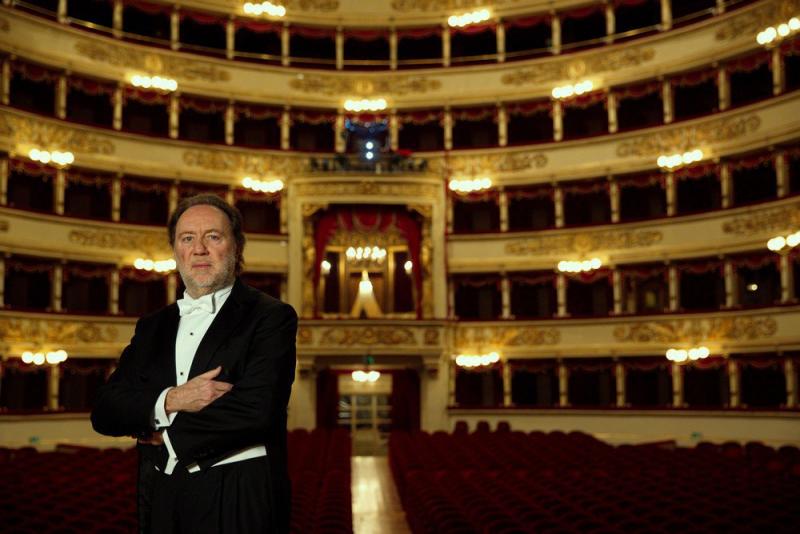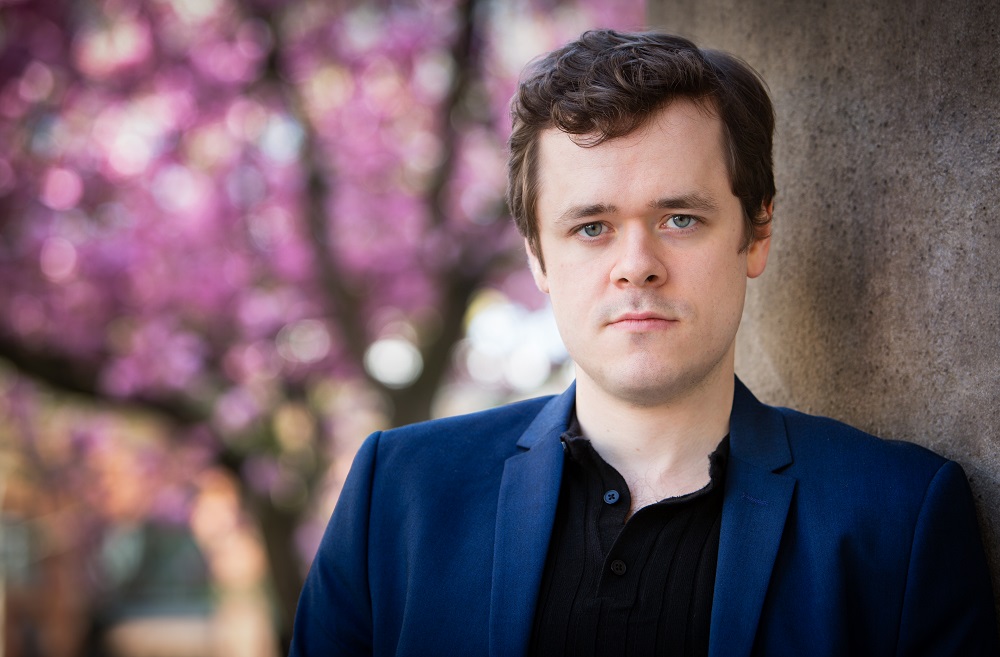Grosvenor, Filarmonica della Scala, Chailly, Barbican review - Tchaikovsky’s force of destiny shines bright | reviews, news & interviews
Grosvenor, Filarmonica della Scala, Chailly, Barbican review - Tchaikovsky’s force of destiny shines bright
Grosvenor, Filarmonica della Scala, Chailly, Barbican review - Tchaikovsky’s force of destiny shines bright
Dramatic flair and sonic luxury from the Italians in a night to remember

You could probably guess from the assembling audience that the orchestra making its Barbican debut last night came from Milan. That many mink coats rarely congregate in a London concert hall.
La Scala’s seemingly unrufflable players, under Chailly’s economical yet masterful direction, were on home territory for the Rossini Overture to La gazza ladra (The Thieving Magpie). This playing set a pattern for the evening: measured tempi, attention to detail, spacious phrasing that breathed as a star singer might, a rich, dark tone as velvety as Chailly’s crimson podium, and an ability to pace crescendos that later paid remarkable dividends in the Tchaikovsky Symphony No. 4. Today fast tempi are often considered historically informed and orchestras can sound as if they're eyeing the next train out. But Chailly’s viewpoint was altogether different: allowing the music room to breathe gave the ear and mind time to take in the significance of each harmony, along with the nuance, balance and structure that ultimately build meaning.
Benjamin Grosvenor (pictured below by Patrick Allen/Opera Omnia), the British former prodigy turned national treasure, was soloist for the Grieg Piano Concerto. Now in his mid-twenties, he still looks about 12, but his playing has gained in heft and his assured virtuosity seemed much at home in the fire, ice and thunder of this ever-popular work. He is the least showy of performers, but plays with an assurance in which his manual choreography is a joy to witness. And he matched the orchestra’s suave power with sizeable tone that never lost its sheen of beauty: silken passagework, modest and sincere songfulness and a magnificently paced cadenza, to which Chailly and the orchestra responded as if with hushed awe. There was perhaps a downside to Chailly’s leisurely approach: with lavish rubato, the first movement occasionally slowed to a sleepy pace, and at times during the finale Grosvenor seemed to be trying to propel the music forward with more overt energy than the orchestra, which once or twice responded with what sounded like a completely different tempo. But thoughts of this were wiped out by Grosvenor’s encore, Grieg's rather pure-sounding Poème érotique, played with disarming tenderness.
There was perhaps a downside to Chailly’s leisurely approach: with lavish rubato, the first movement occasionally slowed to a sleepy pace, and at times during the finale Grosvenor seemed to be trying to propel the music forward with more overt energy than the orchestra, which once or twice responded with what sounded like a completely different tempo. But thoughts of this were wiped out by Grosvenor’s encore, Grieg's rather pure-sounding Poème érotique, played with disarming tenderness.
So to Tchaikovsky’s Fourth. Oh no, not again? Well, that crunching noise you can hear is the sound of a critic eating her words. Hear an interpretation like this one and you see why this work is played so often: it’s fabulous. In Chailly’s hands the first movement emerged as an overwhelming emotional statement, marvellously paced and structured, heart and logic fusing to spectacular effect. With musical drama like this, who needs opera?
The choral brass opening was a glory, the strings would give a great chorus a run for its money, and the woodwind were exceptional: if the oboist ever needed oxygen in the opening of the second movement, there was precious little sign of it – he’s either a master of circular breathing or has lungs the size of La Scala itself. The pizzicato third movement worked balletic magic, and the crash-bang-wallop fourth does what it usually does, only a lot better than usual, all of it aided by the loving attention to detail that characterised the whole concert. Try the phrasing of the cellos’ counter-melody in the first movement’s second theme, lifting on a diminuendo like a tenor reaching for a falsetto top register; or the subtle lean at the top of a falling chromatic run in the woodwind; or the smoothness of the sure-fire exchange between sections at the end of the third movement.
And here’s a chewy question about cause and effect. Listening to an Italian opera orchestra playing a Russian symphony, do we hear Verdian influences in the music because we expect to, or because of the orchestra’s style of playing? The work opens with a powerful fanfare, designed as a "Fate" motif; there follow two main themes, the first brooding, chromatically yearning, the second plaintive and lilting. The patterns of each bear a certain resemblance to Verdi’s Overture to La forza del destino, and the agony of fate is what this symphony is all about. It's worth some thought.
An encore from Verdi himself – the Overture to I vespri siciliani – sent us home hoping for a return visit from the Milanese as soon as possible.
rating
Share this article
more Classical music
 Bell, Perahia, ASMF Chamber Ensemble, Wigmore Hall review - joy in teamwork
A great pianist re-emerges in Schumann, but Beamish and Mendelssohn take the palm
Bell, Perahia, ASMF Chamber Ensemble, Wigmore Hall review - joy in teamwork
A great pianist re-emerges in Schumann, but Beamish and Mendelssohn take the palm
 First Persons: composers Colin Alexander and Héloïse Werner on fantasy in guided improvisation
On five new works allowing an element of freedom in the performance
First Persons: composers Colin Alexander and Héloïse Werner on fantasy in guided improvisation
On five new works allowing an element of freedom in the performance
 First Person: Leeds Lieder Festival director and pianist Joseph Middleton on a beloved organisation back from the brink
Arts Council funding restored after the blow of 2023, new paths are being forged
First Person: Leeds Lieder Festival director and pianist Joseph Middleton on a beloved organisation back from the brink
Arts Council funding restored after the blow of 2023, new paths are being forged
 Classical CDs: Nymphs, magots and buckgoats
Epic symphonies, popular music from 17th century London and an engrossing tribute to a great Spanish pianist
Classical CDs: Nymphs, magots and buckgoats
Epic symphonies, popular music from 17th century London and an engrossing tribute to a great Spanish pianist
 Sheku Kanneh-Mason, Philharmonia Chorus, RPO, Petrenko, RFH review - poetic cello, blazing chorus
Atmospheric Elgar and Weinberg, but Rachmaninov's 'The Bells' takes the palm
Sheku Kanneh-Mason, Philharmonia Chorus, RPO, Petrenko, RFH review - poetic cello, blazing chorus
Atmospheric Elgar and Weinberg, but Rachmaninov's 'The Bells' takes the palm
 Daphnis et Chloé, Tenebrae, LSO, Pappano, Barbican review - lighting up Ravel’s ‘choreographic symphony’
All details outstanding in the lavish canvas of a giant masterpiece
Daphnis et Chloé, Tenebrae, LSO, Pappano, Barbican review - lighting up Ravel’s ‘choreographic symphony’
All details outstanding in the lavish canvas of a giant masterpiece
 Goldscheider, Spence, Britten Sinfonia, Milton Court review - heroic evening songs and a jolly horn ramble
Direct, cheerful new concerto by Huw Watkins, but the programme didn’t quite cohere
Goldscheider, Spence, Britten Sinfonia, Milton Court review - heroic evening songs and a jolly horn ramble
Direct, cheerful new concerto by Huw Watkins, but the programme didn’t quite cohere
 Marwood, Power, Watkins, Hallé, Adès, Bridgewater Hall, Manchester review - sonic adventure and luxuriance
Premiere of a mesmeric piece from composer Oliver Leith
Marwood, Power, Watkins, Hallé, Adès, Bridgewater Hall, Manchester review - sonic adventure and luxuriance
Premiere of a mesmeric piece from composer Oliver Leith
 Elmore String Quartet, Kings Place review - impressive playing from an emerging group
A new work holds its own alongside acknowledged masterpieces
Elmore String Quartet, Kings Place review - impressive playing from an emerging group
A new work holds its own alongside acknowledged masterpieces
 Gilliver, LSO, Roth, Barbican review - the future is bright
Vivid engagement in fresh works by young British composers, and an orchestra on form
Gilliver, LSO, Roth, Barbican review - the future is bright
Vivid engagement in fresh works by young British composers, and an orchestra on form
 Josefowicz, LPO, Järvi, RFH review - friendly monsters
Mighty but accessible Bruckner from a peerless interpreter
Josefowicz, LPO, Järvi, RFH review - friendly monsters
Mighty but accessible Bruckner from a peerless interpreter
 Cargill, Kantos Chamber Choir, Manchester Camerata, Menezes, Stoller Hall, Manchester review - imagination and star quality
Choral-orchestral collaboration is set for great things
Cargill, Kantos Chamber Choir, Manchester Camerata, Menezes, Stoller Hall, Manchester review - imagination and star quality
Choral-orchestral collaboration is set for great things

Add comment